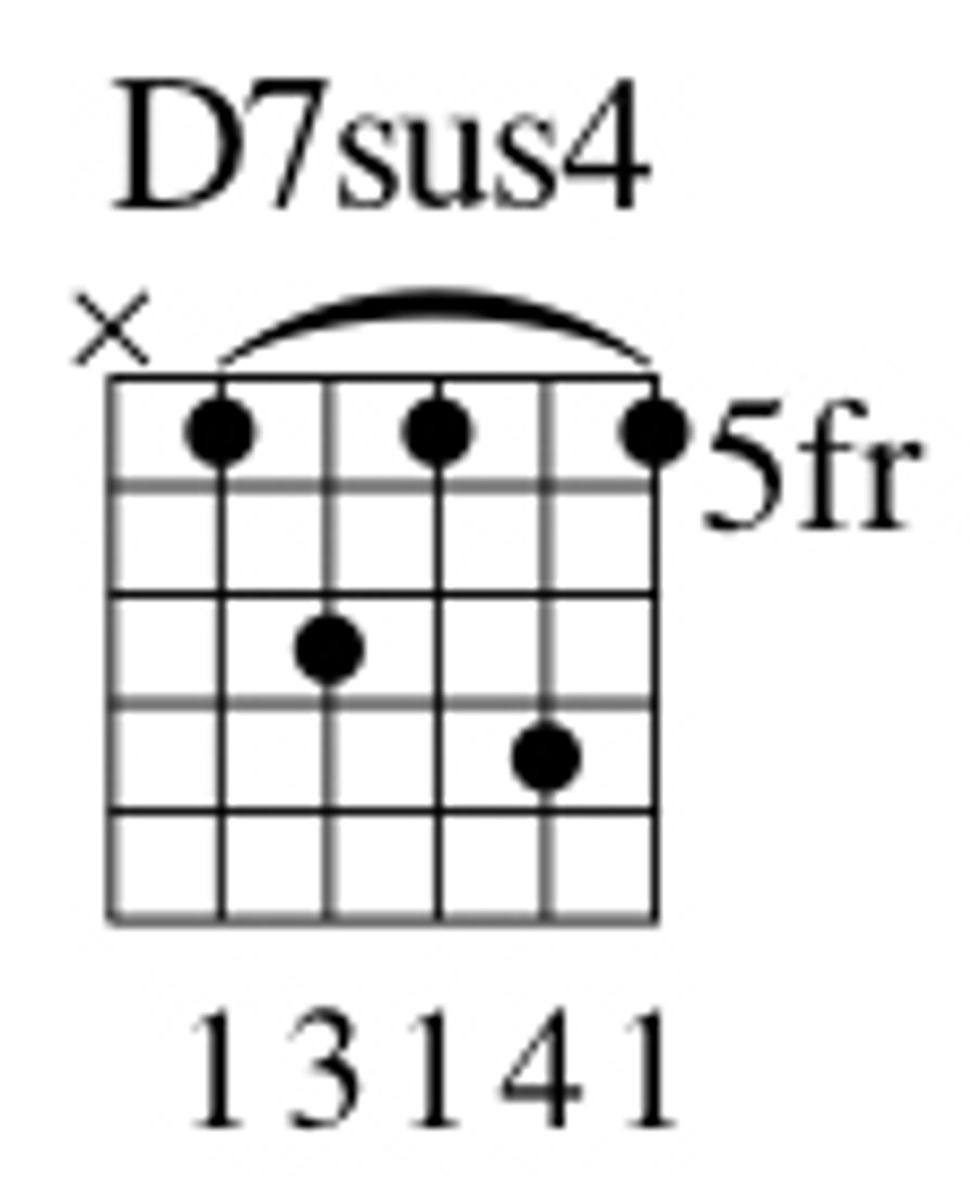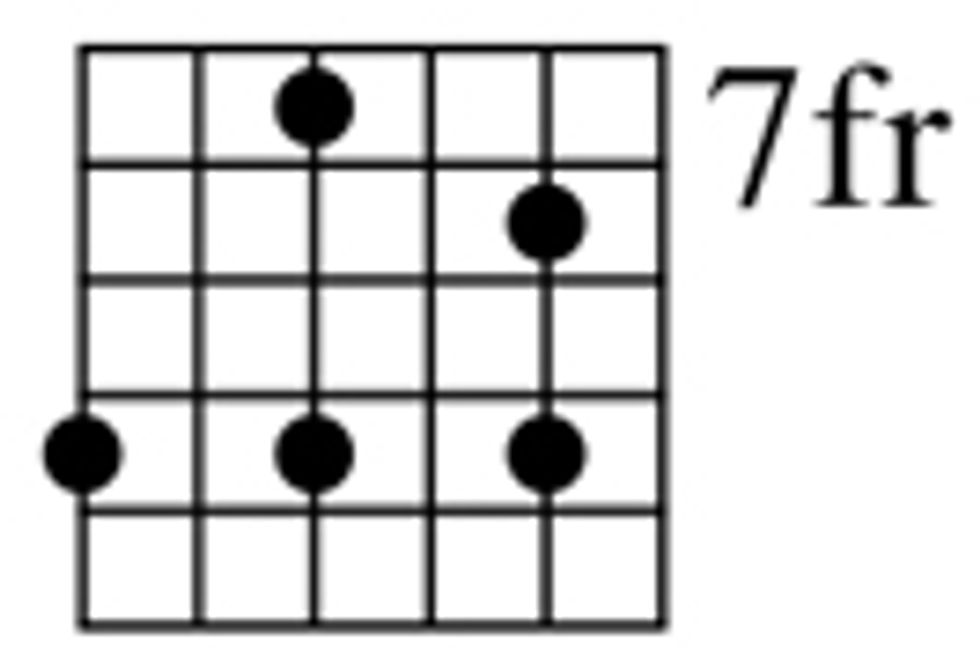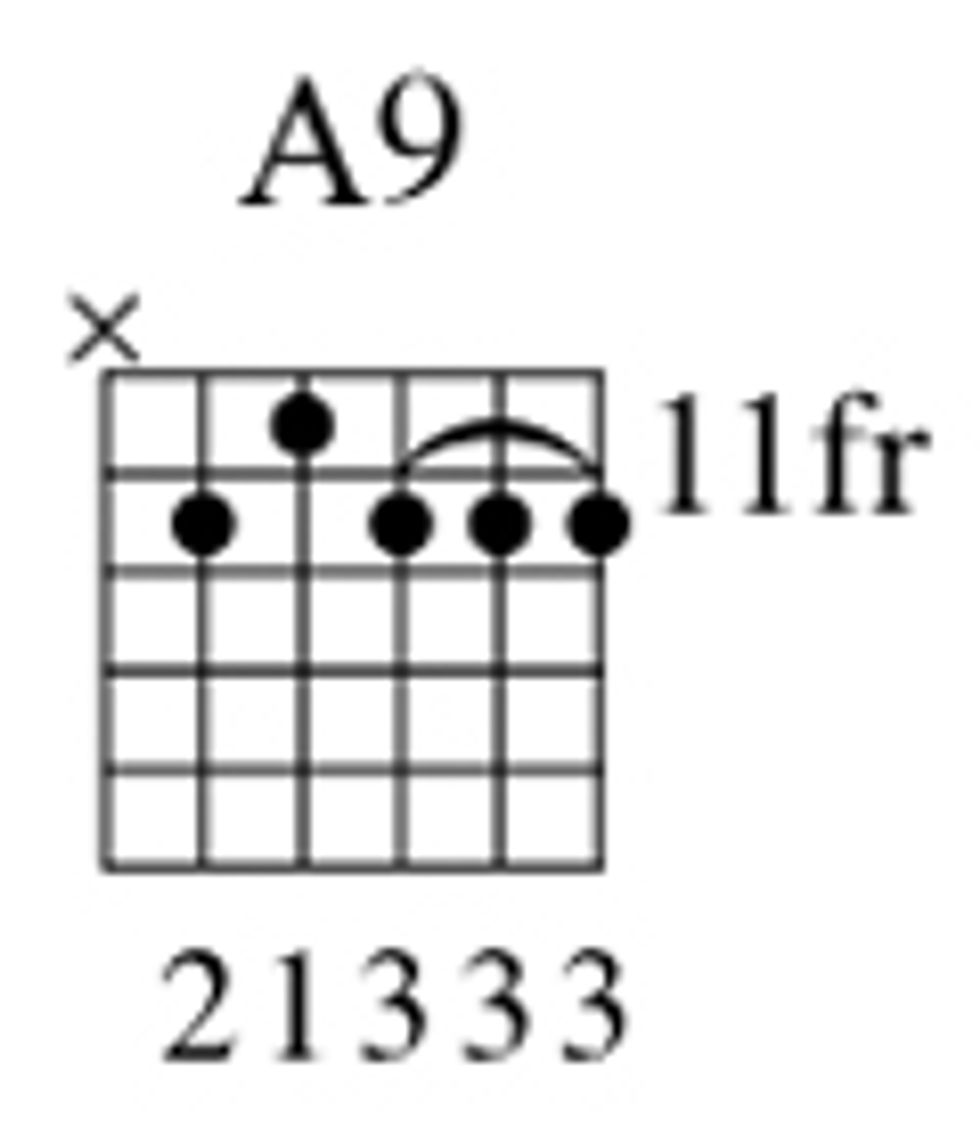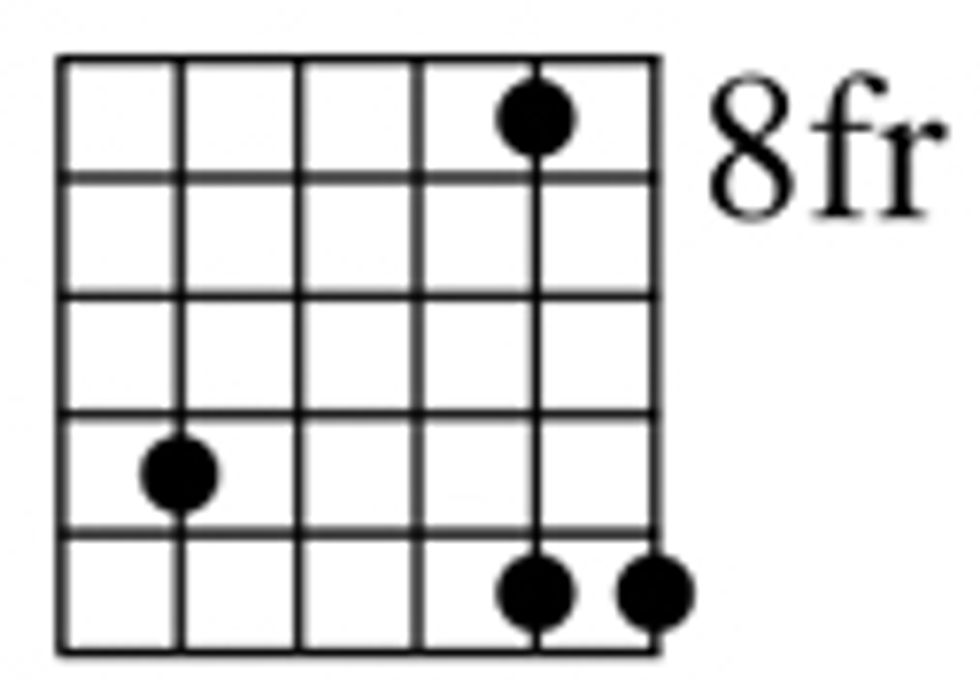Chops: Intermediate
Theory: Intermediate
Lesson Overview:
• Prepare yourself for when you
get a flat tire.
• Learn how to turn your favorite
chords into solos.
• Investigate the subtleties of the
7sus4 chords.
“Wait! Look over there … in the dark. Is that an abandoned car?” I am always amazed how bad luck and good luck can occur simultaneously. It was my 20th birthday, and I was with my bandmates from Racer X. We were recording our second album in a remodeled chicken ranch north of San Francisco. We had taken the night off to see Poison play at a club in the city. Poison’s catchy tunes and choreography hadn’t had time to work their magic on the masses yet, so C.C. and the boys were still slogging it out in the clubs. After the show, my bandmates and I piled back into my newly purchased—but very previously owned—Oldsmobile and headed back into farm country where the chickens and our guitars awaited us.
It was about an hour drive into rural darkness before we would reach our destination. The city lights had faded from the rearview mirror. We were tired and traffic lesson > SHRED YOUR ENTHUSIASM was sparse. The night was peaceful and … BLUCK! blook-blook-blook-blook-bleckbleck- bleck-bleck-blunk-blunk-blunk-blunkblunk ... yek … yek … yek … yubbbb.
One of my tires had blown out. I slowed down and pulled off the highway, and onto the gravelly berm. I had never changed a tire before, but I was not without help. Jeff Martin, Racer X’s lead singer, has a heroic reputation for being able to repair, build, or modify just about anything. My car, and our ride home, was in good hands.
Of course, the first piece of equipment that is needed to change a blown-out tire is a spare tire. I opened my trunk. It contained no such thing. That’s when we saw it, a ghostly image just barely visible in the distance— an abandoned car. My car may not have had a spare tire, but it did have a lug wrench, so off we went to see if we could salvage a replacement tire. It turns out that we could. Jeff was able to remove a healthy tire and roll it back to my crippled car.
Things were going well. My car had a functioning jack and Jeff was able to prop up my car, so that the new tire could be installed. That’s when Jeff discovered that the lug holes on the new wheel did not line up with the lug posts on my axle. Things were not going so well.
Here is where the important part of the story comes in. Let me frame it first as a mathematical equation: 2 + 2 = 5 if you take a big piece of metal and pound that 5 until it pretty much looks like a 4.
And that’s what Jeff did. He looked at the lugs on my car and saw where they needed to go in order for the replacement wheel to fit.
This principle can be applied to playing arpeggios on a guitar. First, let’s pause to take a look at the dictionary definition of arpeggio: The notes of a chord played in succession, either ascending or descending.
That’s just fine, but I’m going try an experiment. I’m going to discard the second half of the definition (ascending or descending), and focus entirely on the first half. Let me show you what I mean. In order to play the notes of a chord in succession, we’ll begin by choosing a chord.
I’m going to pick my #1 favorite chord in the world. It’s a dominant 7sus4 chord. Why is it my favorite? Because my eyebrows rise up and my forehead gets all crinkly whenever I hear it. It’s also in these awesome songs: “What a Fool Believes” — The Doobie Brothers (first chord) “Real Man” — Todd Rundgren (“got my head in the sky”) “A Hard Day’s Night” — The Beatles (the legendary opening chord, arguably)

Enough chord promotion. It’s time to grab you guitar and play it in the key of D as shown in Fig. 1. As you play the chord, please notice that the voicing is 1–5–7–4– 5. In contrast to this chord, the corresponding arpeggio, according to the strict dictionary definition, should voice these notes in purely ascending order: 1–4–5–7.
Can you see the difference? Go back and look at the chord voicing again. The 7 is not placed at the end, but in the middle. The 4th is closer to the end, and there are two 5ths that are spread way apart. I think this chord voicing actually sounds better, is easier to play, and projects the character of the sus4 with more clarity. There isn’t a musical reason why the chord voicing has to ascend strictly in order. It’s my favorite chord and the voicing sounds good, so I’m sticking to it.

So here is the big moment. I want to disregard the rule of “ascension,” and create an arpeggio using the same voicing as my favorite chord. For that, I need to invent a completely new fingering. When you play Fig. 2, I think you’ll immediately feel why.
The key to the fingering in Fig. 3 is that there isn’t any barring, so the notes are separate from each other and have more potential for vibrato. Plus, in some areas we use a “two-notes-per-string” arrangement, which is very useful for speeding up the line and making new phrasing patterns. My favorite chord has become a SOLO. I can now simulate “A Hard Day’s Night,” but at lightning speed!

This will also work for other chords. In Fig. 4 you can see an A9 chord—also known as the “James Brown” chord. I tried to find a fingering that would allow me to play this chord voicing as an arpeggio. I couldn’t do it exactly, but I could use my lug wrench to pound a note off of it and then it worked just fine. Fig. 5 is the arpeggio, but without the root.
But we’re not done with our lug wrench


If you’re willing to learn the pattern above, then you deserve to be rewarded with Fig. 7

So now, I ask you: Do you also have a favorite chord? If you do, then please waste no time in pounding it into an arpeggio. The fingerings will surprise you, and some new musical doors will appear for you to explore.
If you don’t have a favorite chord here are some ways to look for one:
- Take some lessons from a piano teacher.
- Take some lessons from a jazz guitar player.
- Learn 20 Beatles songs—learning 25 or 30 is even better.
- Learn 10 songs where piano is the featured instrument.
- Listen to your favorite music and when your eyebrows jump up, go back and learn that chord.
Finally, I would like to thank Jeff Martin for saving the day and getting my car back on the road. I suppose there’s the possibility that the abandoned car had an owner who returned to a very nasty surprise. If that owner was you, then I send my apologies for the missing tire and my warmest gratitude for helping the band and me finish a face-melting heavy metal album. It’s called Second Heat if you want to have a listen.
 Paul Gilbert purposefully began playing guitar
at age 9, formed the guitar-driven bands Racer
X and Mr. Big, and then accidentally had a No.
1 hit with an acoustic song called “To Be with
You.” Paul began teaching at GIT at the age of
18, has released countless albums and guitar
instructional DVDs, and will be remembered as
“the guy who got the drill stuck in his hair.” For
more information, visit paulgilbert.com.
Paul Gilbert purposefully began playing guitar
at age 9, formed the guitar-driven bands Racer
X and Mr. Big, and then accidentally had a No.
1 hit with an acoustic song called “To Be with
You.” Paul began teaching at GIT at the age of
18, has released countless albums and guitar
instructional DVDs, and will be remembered as
“the guy who got the drill stuck in his hair.” For
more information, visit paulgilbert.com.










![Rig Rundown: Russian Circles’ Mike Sullivan [2025]](https://www.premierguitar.com/media-library/youtube.jpg?id=62303631&width=1245&height=700&quality=70&coordinates=0%2C0%2C0%2C0)














